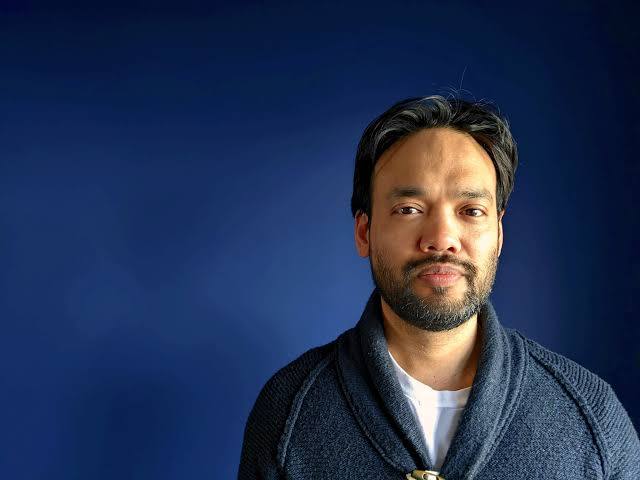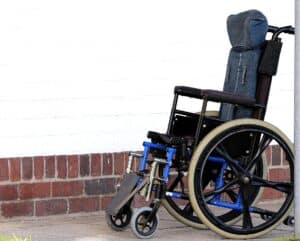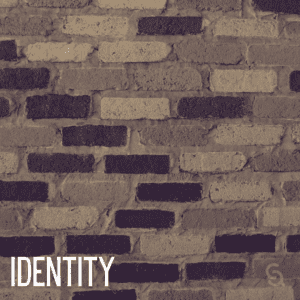 The words of the Apostle Thomas, uttered days after the resurrection, have lived on in infamy. His disbelief that Jesus had truly conquered death made him understandably skeptical:
The words of the Apostle Thomas, uttered days after the resurrection, have lived on in infamy. His disbelief that Jesus had truly conquered death made him understandably skeptical:
“Unless I see in his hands the holes from the nails, and put my finger into those holes, and put my hand on his side, I’ll never believe.”
Later, Jesus appears again. This time, Thomas is in the room. Jesus turns to him and says,
“Put your finger here. Look at my hands. Put your hand into my side. Don’t disbelieve but believe!”
Thomas mirrors a common posture many non-disabled people hold: we demand proof before belief. We are often skeptical of disability, accepting only what we can easily understand or see. Even when there is a measure of acceptance, disabled people are too often reduced to a diagnosis—overlooked as whole, complex persons.
We are shaped by an ableist society that defines “normal” through a non-disabled lens. Bodies that fall outside those norms are met with suspicion, pity, or outright exclusion. The question for the Church is: How are our worldviews shaped through the example of Jesus?
A critical clue lies in Thomas’ encounter with the resurrected Christ. We might imagine Jesus’ risen body as perfect. And in a sense, it was. But the perfection he revealed included the marks of deep wounding. Jesus chose to reveal himself with his injuries intact. He chose a disabled body as his resurrected form—a subversive act that echoes the truth he taught:
“The last shall be first, and the first last…”
So how does the Church embody Christ’s disabled body today? Are the needs of disabled people—those through whom the resurrected Christ is still revealed—treated as core concerns? Does disability justice (a movement that centers racialized, queer, gender-minoritized disabled people) shape how we live and believe together?
Or are we, like Thomas, stuck in disbelief, unwilling to truly see the image of God in one another?
A Pandemic of Exclusion
The Church’s failures to build spaces of belonging for disabled people became painfully clear during the COVID-19 pandemic. Very few churches prioritized health measures like vaccines, clean air policies, or widespread masking—tools that protect not just immunocompromised people, but whole communities.
Instead, many churches returned to “normal” without regard for the vulnerable. In doing so, they not only excluded disabled folks but fueled cycles of respiratory illness that harm everyone. Accessibility—like air filtration or masking—is viewed as optional. Belonging is something marginalized people must fight for.
Even churches that offered livestream services often framed them as temporary or second-best—a sliver of connection for those who “chose” to stay home. But this so-called choice often reflects a hard truth: churches cater to the comfort of the many, not the needs of the few. The paying members, not the disenfranchised.
In fact, some churches have gone so far as to exempt themselves from accessibility requirements under the Americans with Disabilities Act. In practice, many churches have become more hostile to disabled communities in recent years.
What Would It Take to Belong?
Belonging for disabled folks—visible and invisible—remains in short supply. Most churches are designed by and for able-bodied people. Preference and design still cater to the majority, and that is in direct opposition to Christ’s teachings.
Still, hope is not lost. Small but significant shifts are possible.
For example, mitigation of respiratory illnesses is within reach:
-
Add air filtration systems to sanctuary spaces.
-
Normalize masking in indoor gatherings.
-
Provide hybrid and online gatherings as an ongoing priority, not an afterthought.
Beyond logistics, churches must commit to deeper theological and cultural change:
-
Reimagine theology so that disability is not tied to sin, lack of faith, or the need for healing. Understand that the “spiritual condition” of disabled people is not dependent on physical ability.
-
Co-create with disabled people. Don’t design policies for disabled folks—design with them. Elevate disabled leadership. Learn from disability justice movements.
Every one of us will one day inherit a disability. Many already live with invisible ones. Our churches must reflect this truth in how we teach, worship, and design our spaces.
What Does an Inclusive Church Look Like?
Churches that practice radical inclusion do exist, though they are too rare. These communities center marginalized voices and reimagine what belonging looks like.
Online communities offer life-saving connection, especially for people who are isolated or have limited mobility. They count just as much as in-person gatherings. But the need for them is a reflection of a broken system—one where the participation of those with disabilities is still an afterthought.
And so I return to that image of Thomas, reaching for the wounded Christ.
Where have we turned our gaze away from radical inclusion? What do we miss when we exclude disabled bodies—the very ones through whom Christ still chooses to reveal himself?
Next time you receive communion, consider this:
The body was broken for you.
And it remains broken in resurrection.
That brokenness is not a flaw. It is holy.
It is the very place where justice begins.
📖 Further Reading
-
The Disabled God by Nancy Eiesland
-
My Body Is Not a Prayer Request by Amy Kenny
-
Disability and the Church by Lamar Hardwick
 Rohadi Nagassar is the author of five books, including Whole & Human: Forty Meditations for Liberating Body and Spirit and When We Belong: Reclaiming Christianity on the Margins (2022). He serves as a part-time vocational minister and lives in Calgary, Alberta, on Treaty 7 land. Listen to his podcast, Faith in a Fresh Vibe (featuring the “Farewell Evangelicalism” series), or connect via rohadi.com and @rohadi.nagassar on Threads and Instagram.
Rohadi Nagassar is the author of five books, including Whole & Human: Forty Meditations for Liberating Body and Spirit and When We Belong: Reclaiming Christianity on the Margins (2022). He serves as a part-time vocational minister and lives in Calgary, Alberta, on Treaty 7 land. Listen to his podcast, Faith in a Fresh Vibe (featuring the “Farewell Evangelicalism” series), or connect via rohadi.com and @rohadi.nagassar on Threads and Instagram.


